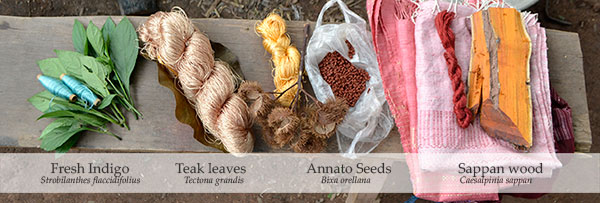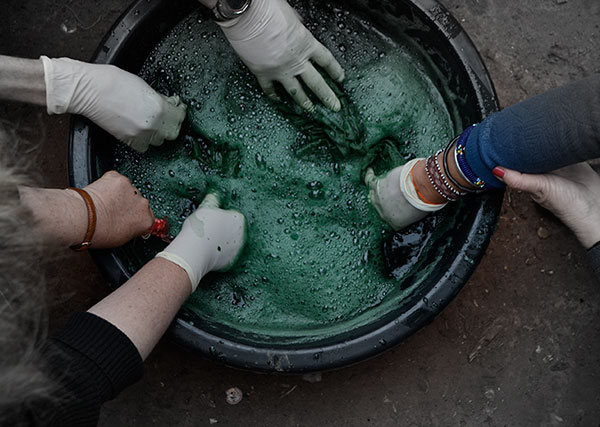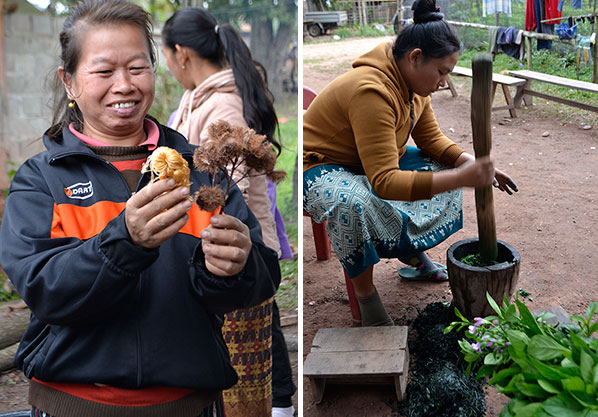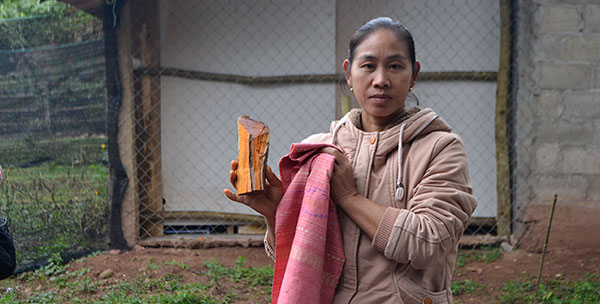
Natural dyeing in Laos is still very common. Although yarns are purchased from the markets with synthetic dyes, there is a still a demand for natural dyeing. The access to the natural environment, the dyer’s knowledge and the array of colours available with multiple overdyes is the most interesting I’ve seen so readily.

We were fortunate to have a hands on natural dye workshop with dyers from Ban Phieng Ngam in the Luang Namtha area.The workshop was fantastic. The available dyes were fresh Indigo which produces a green, Teak leaves for a rich beige, Annato seeds for orange and Sappan wood for a pink range. We were provided with silk scarves to dye and most of us, much to the bewilderment of the Lao teachers, wanted to create that ‘special’ look with a shibori tie in them. I did a very fancy (boring) plain line! Which, after dyeing, really did detract from the silk scarf after all. Other members of the group did interesting patterns but I wonder why most of us wanted to tie up for resist effects and couldn’t handle a straight dye job enriched with merely the colours of the earth?
Dave, my husband did a straight dye job in the fresh indigo and he liked it so much he’s come home interested in growing more dye ladden plants, so make sure you take your partners along on textile tours because they may be able to help you out when you get back.
Except for the fresh Indigo all of the dyepots were bought to a simmer over open fires for dyeing. The fresh Indigo was collected on the spot and pounded well to place in the dyepot. Alum was used as a mordant.(not sure about the fresh indigo though)
It’s great to do hands-on workshop within the context of a tour. Although textiles isn’t the only aspect of this particular cultural tour, we got to visit plenty of places and see how the people live and work.




Leave a Reply